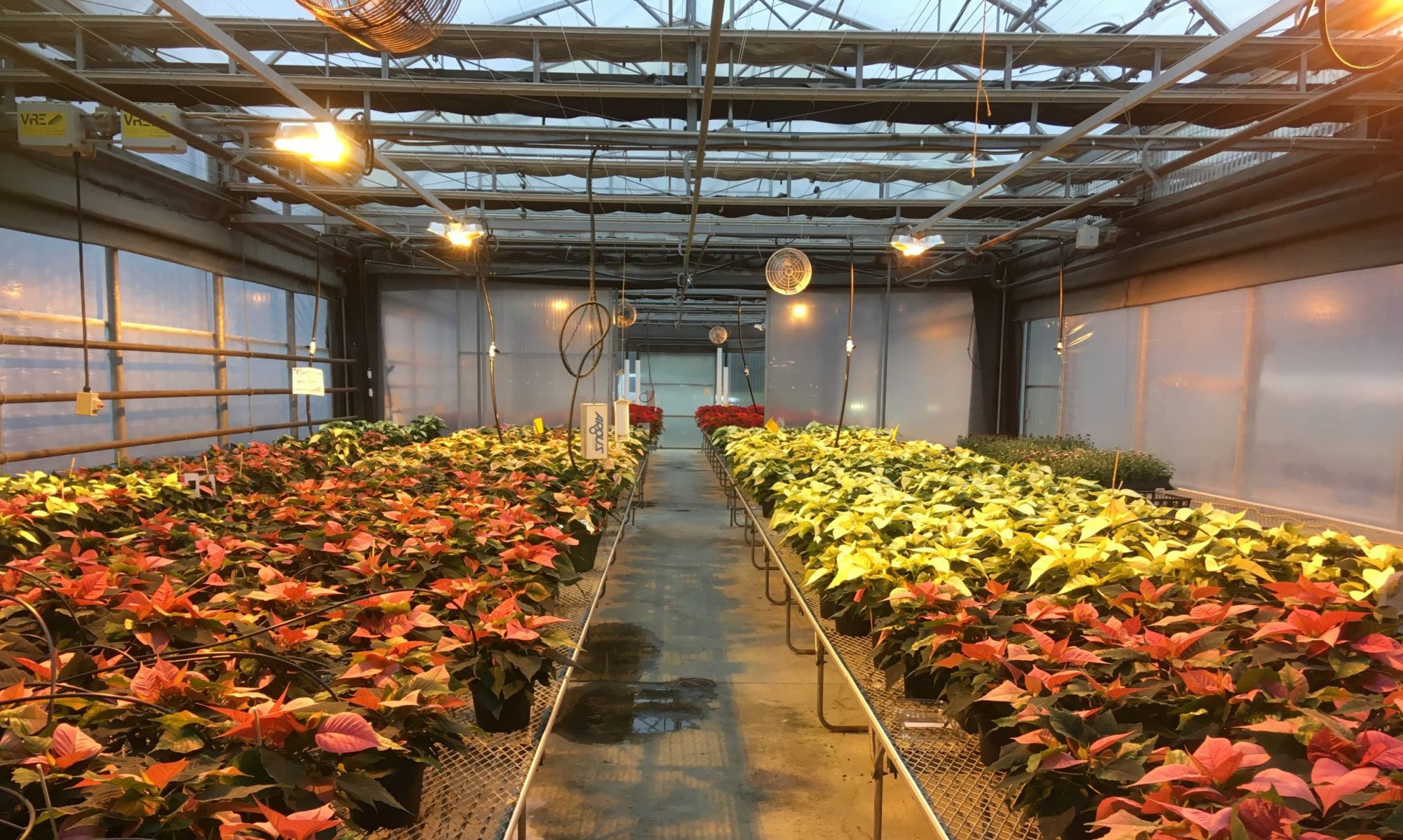Week Number: 37
Environmental Conditions:
Day: Heating Setpoint 18C Cooling Setpoint 25C
Night: Heating Setpoint 18C Cooling Setpoint 25C
Supplemental Lighting:
14 hours of daylight required. Supplemental lights via HPS lights from 6am-8am and again from 6pm-8pm. If light levels drop 200 W/m2 for more than 30 minutes between 8am and 6pm the supplemental lighting will also turn on. I’ve stopped by the greenhouses within these time brackets to ensure that the lights are turning on and as I have scheduled them to.
Hours of Black Out: N/A
Nutrient:
EC target is 1.5 – 2.0 pH target is 5.7 – 6.3
EC 0.5-1.6 measured pH 4.8 – 5.7 measured
*Review the picture below of the EC and pH tracking chart to see data for specific cultivars.
*See pH chart below for visual on how different salts are available at certain pH.
There is always an inverse relationship between EC and pH meaning, if EC is high then pH tends to be low and visa versa. EC tells us how much salts are in the solution being tested but, not which salts specifically. When measuring EC and pH in our poinsettia crop its important to consider when the last watering was and what the crop was last watered with. For example, if we water the day before we measure EC/pH, the results will tell us how much salts are in the soil one day after watering. So, we need to make sure we are measuring what we want and at the right time. If we are using EC data to determine IF we should fertilize, then we need to take our EC measurement just before the time of watering to determine how much salts are pot. We can use the pH information to determine how available the salts could be to the plants.


Watering/Fertilizer:
Due to the higher EC’s this week the class decided we should clear water flush on the next watering. This decision also included information on crop age and time until sale date. We also took into consideration the heights of the poinsettias when determining what (fertilizer or not) to water with.
Its important to remember that we should expect our plants to double in height once black out starts. This means we should aim to have our crop at 20cm-22cm by the time black out starts to have a desired height of 40cm-42cm. It’s worth noting in my experience we should have our plants towards the top end of the scale by black out or slightly taller in order to meet our desired sale height.
*See my crop notes attached for information on specific watering.
Observations:
Overall the crop is looking great. This week we saw the lagging lateral bud break catch up to the rest of the crop. We had higher than normal outdoor temperatures this week making it challenging to keep the greenhouse temperatures under 25C. We have still been rolling up the side walls at the beginning of the day and then rolling then down again around 6:00pm. I have been using the shade curtain to protect the poinsettias from the extreme light this past week again. The shade curtain is set to extend over the crop once outside light levels reach higher than 300 W/m2 for more than 30 minutes. Lately, this results in the crop being covered for a large portion of the day.
The plants are nearly at 20cm-22cm and we still have two (2) weeks until black out. We could consider dropping our cooling temperature at least one (1) degree to slow our plants down. It’s worth noting that we found some discrepancies in technique when taking poinsettia heights; in some cases plants even shrunk! Watch my video on how to take take poinsettia heights below.
I already mentioned EC and pH above but, I have been clear water flushing the crop in the later part of the week to combat the high(ish) measured EC numbers. The low pH is concerning, and we will watch for any changes on Tuesday when the class takes the EC/pH measurements again.
We are seeing some adult fungus gnat presence in the greenhouse when moving through the crop, especially in the Aplina cultivar. Oliver investigated a dead-looking poinsettia and found fungus gnat larva in the stem. Biological insects have been ordered through BioBest and will be put on the crop as soon as the arrive to combat this pest pressure. Starting this week, we will develop and implement an IPM plan for the zone 4 to scout and monitor for pest pressures.
This weekend there is a smoke advisory for our area. I do not expect this to have large impacts on the crop however, I will take it into consideration if we start to see any concerning symptoms in the crop.
Only two (2) more weeks until black out! Time flies when you’re growing poinsettias!

